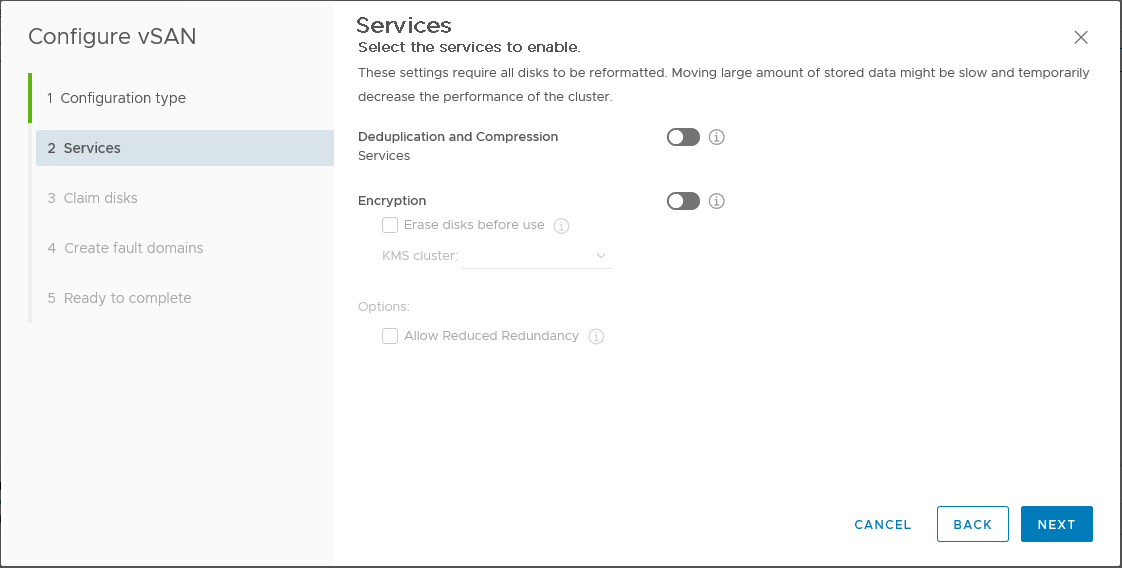You can use the Configure vSAN wizard in the HTML5-based vSphere Client to complete the basic configuration of your vSAN cluster.
Note:
You can use Quickstart to quickly create and configure a vSAN cluster. For more information, see Using Quickstart to Configure and Expand a vSAN Cluster.

Prerequisites
Create a cluster and add hosts to the cluster before using the Configure vSAN wizard to complete the basic configuration.
Procedure
Results
What to do next
Verify that the vSAN datastore has been created. See View vSAN Datastore.
Verify that the vSAN storage provider is registered. See Administering VMware vSAN.
Claim disks or create disk groups. See Administering VMware vSAN.